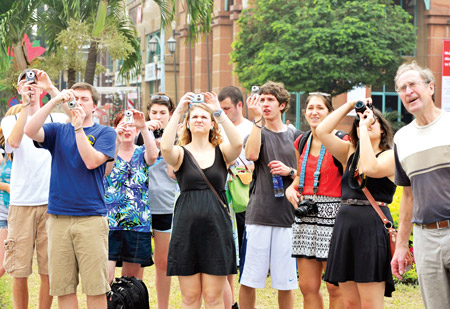Planning Your Visit to Vietnam

While anytime is the best time to visit Vietnam, scheduling your vacation to the country generally depends on your purpose or what kind of activity you have in mind. But before booking your travel, it’s best to know all about Vietnam in order to plan your itinerary better and fully enjoy your stay.
Vietnam stretches more than a thousand miles from Sa Pa in the North to the Mekong Delta in the South. There are two climates: the northern and tropical. The former has four seasons while the latter has the dry and wet seasons. The meteorological divide between the two climates is the Hai Van Pass which lies between Hue and Danang.
South Vietnam has a long dry season, beginning from December and ending up to April. It is hottest between March and May. So if you’re a beach lover or an outdoor person in general, these are the best months to visit the country wherein you can leisurely bask in the sun and breathe in the warm but fresh air.
But if you will be in the Ho Chi Minh City area though, take note that the streets can be quite dusty and actually dirty during this season. The fumes from the motorbikes can be prominent during this time too, so most local residents wear masks to protect themselves from both the sunlight and pollution.
But while it can be extremely hot in the lowlands, it is actually cool in the highlands, like in Da Lat, especially when the rainy season starts in May or June. The temperature drops even further from September to December.
Between November to January is the time when Vietnam receives the most number of visitors, probably because it is the end of the rainy season and many tourists choose to spend their holidays here where it is less stressful compared to Western countries and the climate is generally balanced.
North Vietnam on the other hand has four seasons: hot and humid in the summer; and cool and dry winter. Winters can go as low as 0 Degree Celsius, so cold that it even snows in Sa Pa. Meantime in Hanoi, there are four seasons: spring, summer, fall and winter.
Spring in Hanoi is generally wet and damp before the monsoon arrives in May. During this time, the smell of flowers dominates the place as well as an overall tropical atmosphere. In summer, the air is simply hot and humid, but so is almost everywhere else in the world during this season.
Fall or autumn is the best time to visit wherein the temperature is balanced between warm and wet. This is also the most romantic time when the leaves turn colourful and the air is cool. But this season is short, only between mid-September and the end of November so make sure to plan your trip early and well if you want to come during this time since it is the most crowded.
For a tropical country, winter in the North can get really cold and humid, going as low as 10 Degree Celsius. But the region has everything planned out to entertain its guests during this time by setting up street bonfires; hot tea; and warm and charming street food.
Typhoons in the country generally come around August to November. These are usually tropical storms which cause serious damage to the place especially in coastal areas like Hue, Danang and Hoi An.
There are not so many public holidays in Vietnam. Most Vietnamese just have a few days off from work in which they usually spend out of town with their families. Festival dates are not constant because they depend on the moon phases. Tet (Lunar New Year Festival) or National Day is the only major celebration in the country, but one that is really big so you have to schedule your whole trip and activities carefully around this time to avoid getting stranded or run out of rooms and other accommodations.
Depending on your purpose of visit, September to January are the ideal months to visit North Vietnam, while spring and fall are perfect times in the North. Enjoy your stay!









